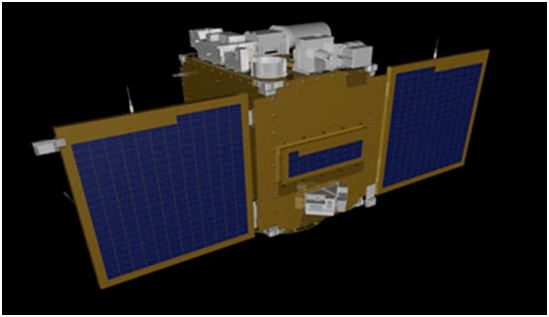South Korea's first encounter with modern rocketry occurred as the U.S. moved missiles into S.K. to counter the North Koreans after the Korean war. The Korean Aerospace Research Institute (KARI) was founded in 1989 in Daejeon, Korea primarily for the purpose of aerospace research. Its mission was to "Perform basic and applied studies in aerospace technology", "Perform government-delegated tasks and support policy development", "Support industries and transfer technology."
In 1990, KARI began working on the KSR series of rockets. The KSR-1 was a one stage rocket and KSR-2 was a two stage rocket. In 1997, KARI began work on KSR-3 which was fueled with LOX/kerosene in order to launch satellites. A test launch of the KSR-3 took place in 2002.
KARI began working on the KOMPSAT satellite program to "nuture Earth-imaging and remote sensing capability for Korea" in 1995. The Arirang-1 was the first satellite designed and built by KARI. It was launched into orbit aboard a U.S. Taurus rocket from Vandenberg Air Force Base in California in 1999. Foreign-built satellites had been launched previously by Korean companies previous to this launch. The Arirang-1 carried a camera that was able to resolve objects of twenty feet across or larger.
The two hundred pound Science and Technology Satellite STSAT-1 was launched by a Russian Kosmos-2M rocket in 2003
The Naro space center was constructed in the early 2000s about three hundred miles south of Seoul. It contains a launch pad, a control center, rocket assembly and test facilities, facilities for satellite control testing and assembly, a media center, an electric power station, a space experience hall and a landing field.
The Arirang-2 was a seventeen hundred pound multifunction satellite designed and built by KARI and launched on a Russian launch vehicle from Plesetsk, Russia in 2006. The satellite orbits at about four hundred miles fourteen times a day. This satellite has a camera that could resolve objects as small as three feet across. One of the purposes of this satellite is to track North Korean military developments and movements. Some of the uses that Arirang-2 imagery have been for land planning, checking for crop diseases, urban planning, military applications and civil engineering for planning routes for roads, railroads and pipelines.
In 2006, South Korea selected two candidates for astronaut training from over thirty six thousand applicants. They were sent to Russia for training at the Gagarin Cosmonaut Training Center in 2007. In 2008, the prime candidate took off from the Baikonur space center in Kazakhstan aboard a Soyuz TMA-12 launch vehicle. She spent ten days doing experiments at the International Space Station.
The two hundred pound STSAT-2A was developed by KARI for indigenous research and development to place a satellite into low Earth orbit, development of indigenous spacecraft and the development of scientific payloads. It was launched in 2009 aboard the first Naro-1 rocket. The Naro-1 rocket was developed by Russia and South Korea. The first launch failed. A second launch in 2010 failed. The third launch attempt in 2013 was successful and represented the first time a South Korean satellite was launched into orbit on a South Korean rocket from South Korean soil.
South Korea is currently working toward another satellite launch in 2019. The launch vehicle will have four clustered engines which can each generate seventy five metric tons of thrust.
STSAT-2A:
